The world’s first stealth bomber, built using the Blended Wing Body (BWB) technology, is a symbol of sophisticated aeronautical engineering—a stunning synthesis of cutting-edge technology and strategic air might. Unveiling the Best of the Northrop Grumman B-2 Spirit, this slim, delta-wing aircraft epitomizes stealth characteristics, engineered to escape enemy radar detection and execute accurate attacks. Its unusual bat-like profile is composed of innovative composite materials and specific coatings that significantly reduce radar reflection, rendering it practically undetectable to enemies.
Northrop constructed the plane, a subsonic flying wing with a crew of two, employing low-observable stealth technology designed to bypass extensive anti-aircraft defences.
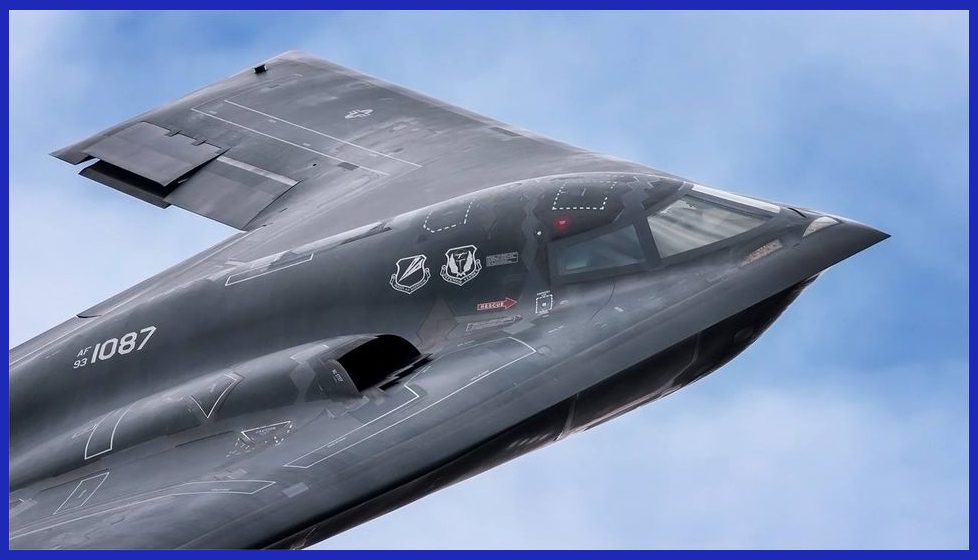
The B-2 Spirit possesses an impressive range exceeding 6,900 miles and demonstrates the capacity to carry both conventional and nuclear payloads, including JDAM, JSOW, JASSM, and B83 nuclear bombs. Operating on a global scale with unparalleled accuracy in target striking, this bomber stands as a crucial element within the US military’s long-range strike capabilities. Its distinctive “flying wing” design enhances aerodynamic efficiency, accommodating a cutting-edge avionics suite and defensive systems.
This empowers the aircraft to penetrate heavily fortified airspace, uniquely positioning it as the sole officially recognized operational aircraft capable of stealthily deploying significant air-to-surface standoff weaponry. Initiating its development under the Advanced Technology Bomber (ATB) initiative during the Carter administration, the program produced 21 B-2s at an average expense of $2.13 billion (in 1997 currency), covering development, engineering, testing, production, and procurement.
The construction cost for each aircraft averaged about $737 million, with the overall procurement expenses (inclusive of production, spare parts, equipment, retrofitting, and software support) averaging $929 million per plane. Particularly after the Cold War’s conclusion, the initially planned acquisition of 132 bombers was drastically reduced to a mere 21. As of 2023, the United States Air Force has 20 B-2s operational, as one was lost in a crash in 2008. These aircraft are expected to remain in service until 2032 when they will be entirely replaced by the Northrop Grumman B-21 Raider.
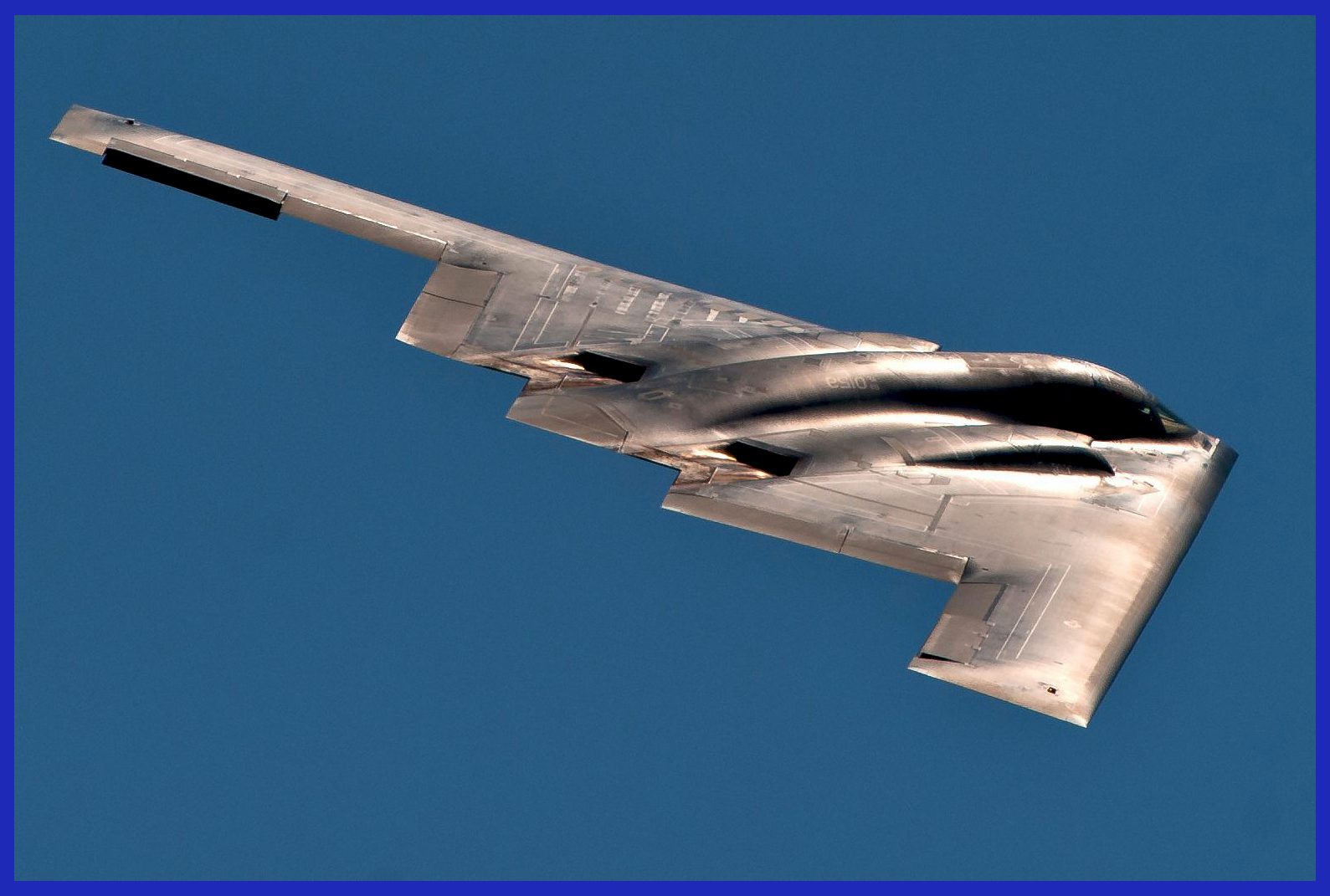
The Development Story of the B-2 Spirit: Subsonic Stealth Bomber
The development of the B-2 Spirit subsonic stealth bomber is characterized by several vital points that highlight its significance and innovation in the realm of military aviation:
Cold War Context: The development of the B-2 Spirit commenced during the Cold War in response to evolving defence requirements, particularly the need for a bomber capable of infiltrating heavily fortified enemy airspace while delivering precision strikes. Around the mid-1970s, military aircraft designers discovered a novel approach to evade missiles and interceptors, now known as “stealth” technology. The fundamental idea was to construct an aircraft with an airframe that could either deflect or absorb radar signals, resulting in minimal radar reflection.
This feature would enable an aircraft to operate with near invisibility, rendering it susceptible only to non-radar-dependent weapons and systems. In 1974, DARPA solicited information from U.S. aviation companies regarding the largest radar cross-section (RCS) an aircraft could have while remaining effectively impervious to radar detection. Initially, Northrop and McDonnell Douglas were chosen for further advancement.
Stealth Emphasis: The design of the B-2 was intentionally geared toward prioritizing stealth capabilities over speed. Its unique flying wing configuration, referred to as the Blended Wing Body (BWB), coupled with the integration of advanced composite materials and radar-absorbing coatings, played a pivotal role in drastically reducing its radar cross-section. This design approach made it exceedingly challenging for enemy radar systems to detect the aircraft. As of 1976, these initiatives had progressed to a point where the development of a long-range strategic stealth bomber seemed feasible.
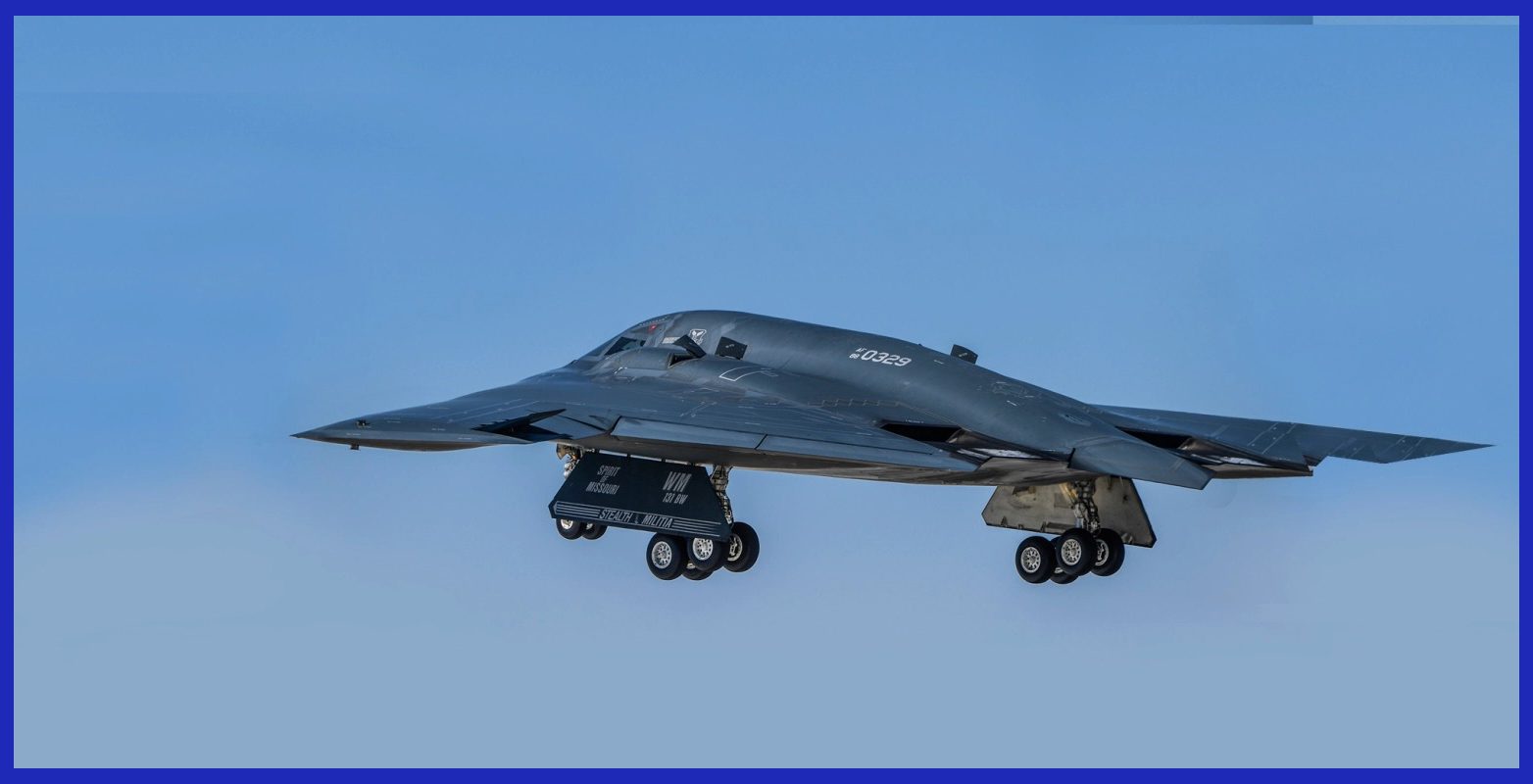
In 1979, the Advanced Technology Bomber (ATB) program was initiated. Subsequent to this, comprehensive development of the classified project commenced, funded under the covert designation “Aurora.” Following the evaluation of proposals from various companies, the ATB competition was narrowed down to two teams: Northrop/Boeing and Lockheed/Rockwell. Both teams embraced flying wing designs, with Northrop’s proposal code-named “Senior Ice” and Lockheed’s named “Senior Peg.”
On October 20, 1981, the Northrop team’s ATB design was chosen over the Lockheed/Rockwell alternative. The Northrop design was designated as the B-2 and named “Spirit”. The bomber’s initial design underwent alterations in the mid-1980s, driven by a change in the mission profile from high-altitude to low-altitude, terrain-following operations. This redesign resulted in a two-year delay for the B-2’s maiden flight and an additional approximate cost of US$1 billion to the program. Up to 1989, it is estimated that a covert expenditure of approximately US$23 billion was allocated for research and development of the B-2. During the 1980s, MIT engineers and scientists were engaged under a classified contract spanning five years to evaluate the aircraft’s mission effectiveness.

Production Challenges, Costs, and Procurement: The development of the B-2 program encountered significant obstacles in production, marked by instances of exceeding budget allocations and facing delays in progress. These complications played a pivotal role in diminishing the originally envisaged count of aircraft to be manufactured. The B-2 initiative had initially set out to construct a fleet comprising approximately 132 aircraft. Nonetheless, owing to the rising financial constraints, the production process underwent substantial limitations. Adding to the scenario, the disintegration of the Soviet Union in the early 1990s effectively eradicated the primary Cold War mission of the B-2 Spirit aircraft.
Amidst financial constraints and opposition within the Congressional sphere, President George H. W. Bush communicated in his 1992 State of the Union Address that the production of B-2 would be confined to a total of 20 aircraft. However, in 1996, the Clinton administration, in contrast to its initial stance of concluding production at 20 aircraft, sanctioned the transformation of the 21st bomber – categorized as a prototype test model – into the fully operational Block 30 status, incurring an expenditure of almost $500 million. In the end, the Air Force procured a grand total of 21 fully operational B-2 bombers.
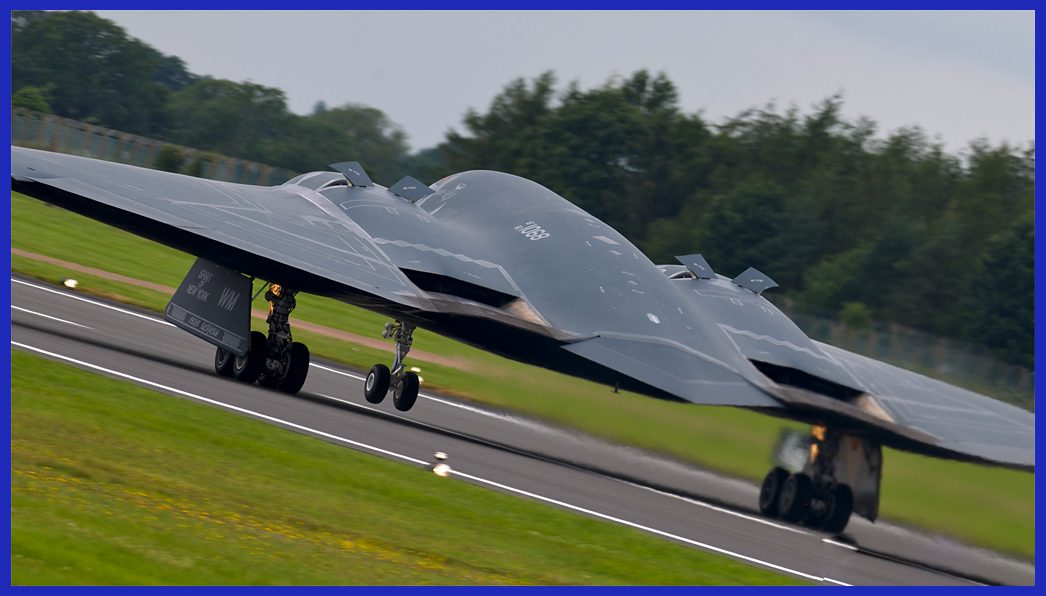
In September 1997, the operation of each hour of the B-2 flight necessitated a substantial 119 hours of maintenance. In comparison, the B-52 and B-1B required 53 and 60 hours, respectively, of maintenance for every hour of flight. This heightened maintenance requirement stemmed from various factors, with a prominent one being the provision of air-conditioned hangars of sufficient size to accommodate the bomber’s expansive 172 ft (52 m) wingspan. These hangars were indispensable for preserving the aircraft’s stealth capabilities, especially its “low-observable” stealth surfaces.
The monthly expenses for maintenance per aircraft amounted to approximately $3.4 million. A report from the Government Accountability Office (GAO) in August 1995 highlighted a particular challenge: the B-2 encountered difficulties operating in heavy rainfall, which posed a threat to its stealth coating, subsequently causing delays in procurement until an effective protective coating was identified. By 2010, the operational cost for a single flight hour of the B-2 reached as high as $135,000, nearly twice the cost of operating the B-52 and B-1 bombers.
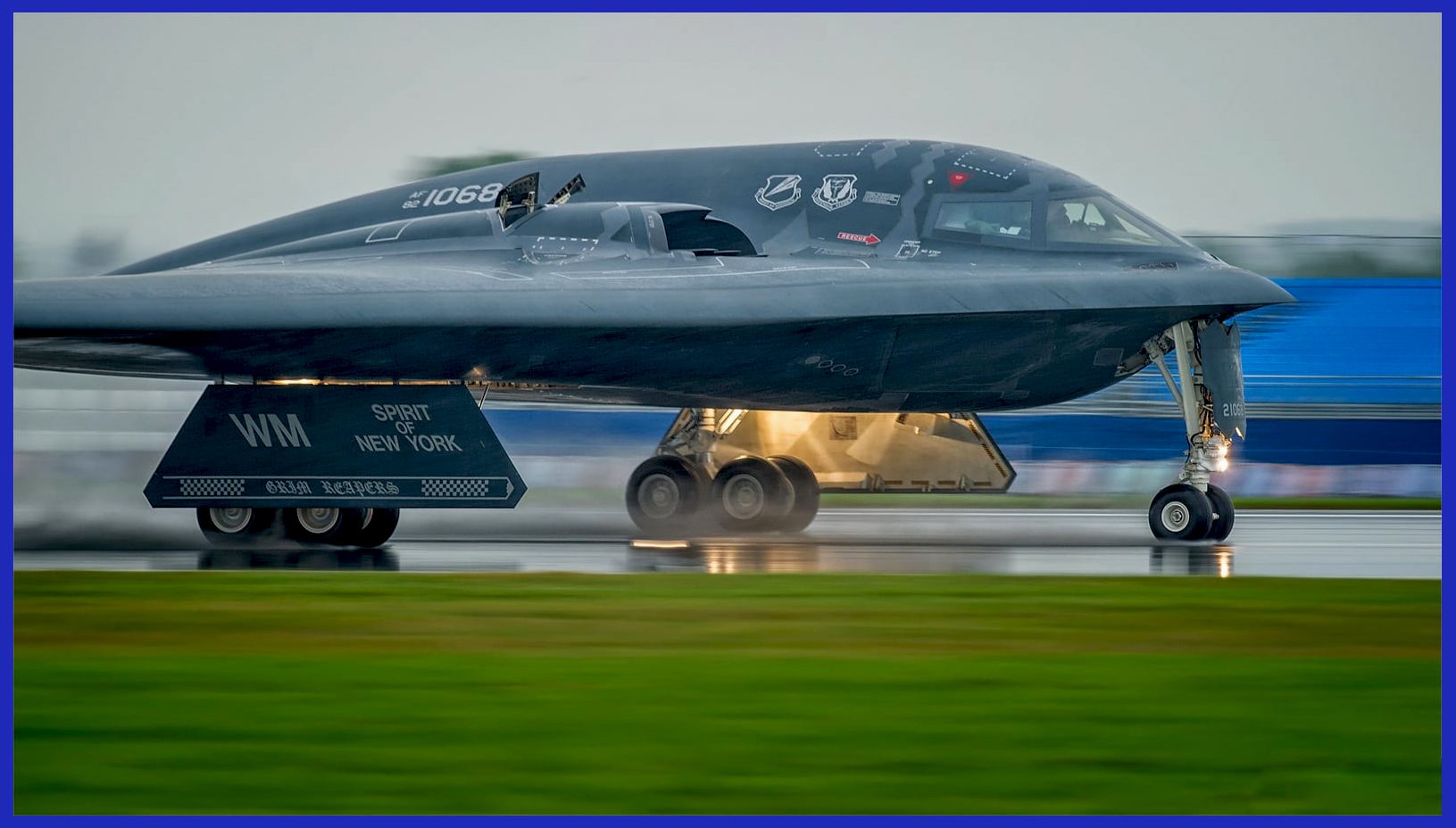
Further Developments, Legacy, and Modernization: As the B-2 fleet continued to age, concerted efforts were undertaken to enhance the aircraft’s avionics, systems, and overall capabilities. A series of upgrade packages have been meticulously implemented to augment the B-2. In 2008, a comprehensive overhaul was conducted on the B-2’s onboard computing architecture. This encompassed the integration of a new integrated processing unit (IPU) which establishes communication with various systems throughout the aircraft via a newly installed fibre optic network.
Simultaneously, a fresh iteration of the operational flight program software was crafted, involving the transformation of legacy code from the JOVIAL programming language to the standard ‘C’ programming language. Moreover, enhancements were applied to the weapon control systems to facilitate precision strikes on mobile targets, including ground vehicles. A significant milestone occurred on 29 December 2008, when USAF officials granted Northrop Grumman a substantial contract amounting to US$468 million. This contract was intended to facilitate the modernization of the B-2 fleet’s radar systems.

Retirement Amidst Strategic Deterrence: Despite incurring substantial maintenance and operational expenses, the B-2 Spirit possessed unparalleled attributes such as its stealth capacity and extended reach for precise strikes, establishing itself as a crucial asset in bolstering the United States’ strategic deterrence and worldwide influence. To enhance the B-2’s capabilities further, the USAF initiated the Defensive Management System Modernization program in 2013, focusing on upgrading the antenna system and related electronics to augment frequency awareness.
Notably, 2014 witnessed the USAF’s delineation of a comprehensive array of enhancements encompassing nuclear warfare capabilities, a novel integrated processing unit, the capacity to transport cruise missiles, and advancements in threat detection. Despite prior intentions to operate the B-2 until 2058, the FY 2019 budget revision expedited its retirement to a date “not beyond 2032,” along with the adjustment of the B-1’s retirement to 2036. This decision ensued from the perceived financial impracticality of maintaining the small fleet of 20 B-2s, given the advent of the more cost-effective B-21 Raider, set to assume the role of stealth bomber from the mid-2020s onward.
Presently, in 2023, comprehensive modernization initiatives continue to extend the B-2’s operational lifespan, enabling its sustained efficacy within evolving threat landscapes, particularly concerning countering emerging Chinese challenges in the South China Sea region.

Design Analysis of the Northrop Grumman B-2 Spirit
The design of the Northrop Grumman B-2 Spirit is a masterpiece of engineering, with its distinctive shape and advanced features serving a multitude of purposes. Here’s a comprehensive analysis of its design:
- Flying Wing Configuration: The B-2’s flying wing design gets rid of the traditional fuselage and tail structures. This reduces its radar cross-section by giving radar waves a smoother and more continuous surface to scan. This lets it travel deep into enemy territory to drop weapons, which could be nuclear weapons. Low observability gives you more freedom of movement at high altitudes, so your devices can see farther and have a wider field of view. The USAF says that it has a range of about 6,900 nautical miles (11,000 km). At cruise level, the B-2 refuels every six hours, taking in up to 45,000 kg of fuel at a time.
- Human-Machine Interface: The design of the cockpit focuses on ergonomics and human-machine interaction, accommodating long-duration missions and providing pilots with the necessary tools for effective decision-making. This is important because sometimes the plane needs to fly for a really long time. The B-2 plane can do a lot of things by itself, so one of the crew members can rest, use the toilet, or make a hot meal while the other crew member watches over the plane.
- This is similar to how the cockpit of the Russian Su-34 plane is set up. The B-2 design research aims to figure out the best times for pilots to sleep and how to make sure they don’t get too tired when they’re flying for a long time.
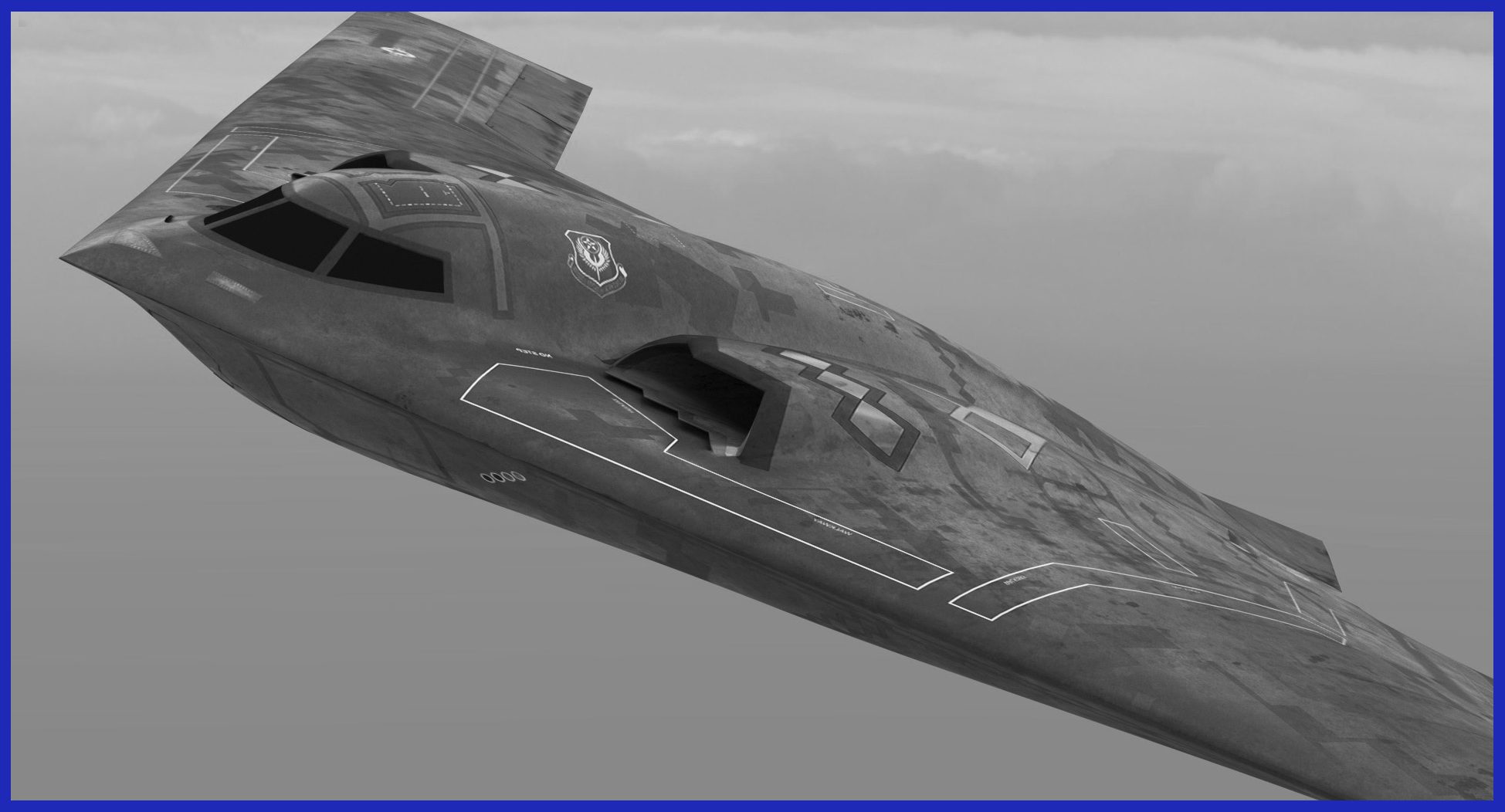
- Internal Weapons Bay: The B-2’s design incorporates an internal weapons bay, which conceals its payload within the aircraft’s structure. This approach not only preserves the aircraft’s stealth profile but also decreases drag and radar signature by removing external stores. The aircraft features two internal bomb bays in which munitions can be stored, either on a rotary launcher or two bomb racks. The B-2 has the capacity to carry a standard load of 40,000 lbs (18,000 kg) of ordnance; however, its estimated maximum limit is 50,000 lbs (23,000 kg). The B-2 aircraft can carry nuclear bombs like the B61 and B83. At the moment, the B-2 is designed to carry many types of regular weapons from its collection.
- Some examples are the JDAM, Mark 82, and Mark 84 bombs for general purposes. It can also carry items like the CBU-87 Combined Effects Munitions, the CBU-97 Sensor Fuzed Weapon cluster bombs, and GATOR mines. In July 2009, Northrop Grumman, the company that makes the B-2, said that the plane could use special gear to drop the Massive Ordnance Penetrator (MOP), which weighs 30,000 pounds (around 14,000 kilograms) and is made to break through strong bunkers. The B-2 has two bomb bays and can carry up to two MOPs, one in each bay. Also, the B-2 can carry the AGM-158 JASSM cruise missile in its weapons bay.

- Avionics and Sensors: The B-2 aircraft is equipped with advanced avionics, radar, and sensor systems that provide the crew with crucial information for precise strike missions. These systems encompass the AN/APQ-181 multi-mode radar, designed for reduced detection probability, a fully digital navigation system integrated with terrain-following radar and Global Positioning System (GPS) guidance, the Astro-inertial navigation system known as NAS-26, and a Defensive Management System (DMS) that notifies the flight crew about potential threats.
- Moreover, the B-2 has constantly undergone significant upgrades in both avionics and combat systems, in addition to regular software updates and the integration of new radar-absorbent materials across the entire fleet. It is also equipped with Link-16 for battlefield communications and a high-frequency satellite link. The aircraft’s capabilities have been expanded to accommodate a variety of new munitions.

- Fly-by-Wire Flight Control: Advanced fly-by-wire technology provides the necessary precise and stable control, effectively compensating for the inherently unstable nature inherent in the flying wing design of the B-2. To achieve this, the aircraft utilizes a highly sophisticated quadruplex computer-controlled fly-by-wire flight control system, which has the remarkable ability to autonomously manipulate various flight surfaces and settings. This manipulation occurs without necessitating direct pilot inputs, thereby actively ensuring the continuous maintenance of the aircraft’s stability.
- To facilitate this process, the flight computer seamlessly receives crucial real-time information concerning external conditions. This includes vital parameters such as the aircraft’s ongoing airspeed and angle of attack, which are obtained through the utilization of pitot-static sensing plates. This cutting-edge technology plays a pivotal role in empowering the B-2 to sustain controlled flight trajectories without requiring any form of manual intervention.

Eclipse of the B-2 Stealth: Unveiling the Shadowy Profile
The most prominent attribute of the B-2 is its distinctive “flying wing” configuration, a design that significantly diminishes the radar cross-section of the aircraft, making it exceptionally challenging for adversary radar systems to detect. The cohesive, integrated wing-body design diminishes the presence of corners and edges that might otherwise reflect radar waves, thereby heightening its stealth capabilities.
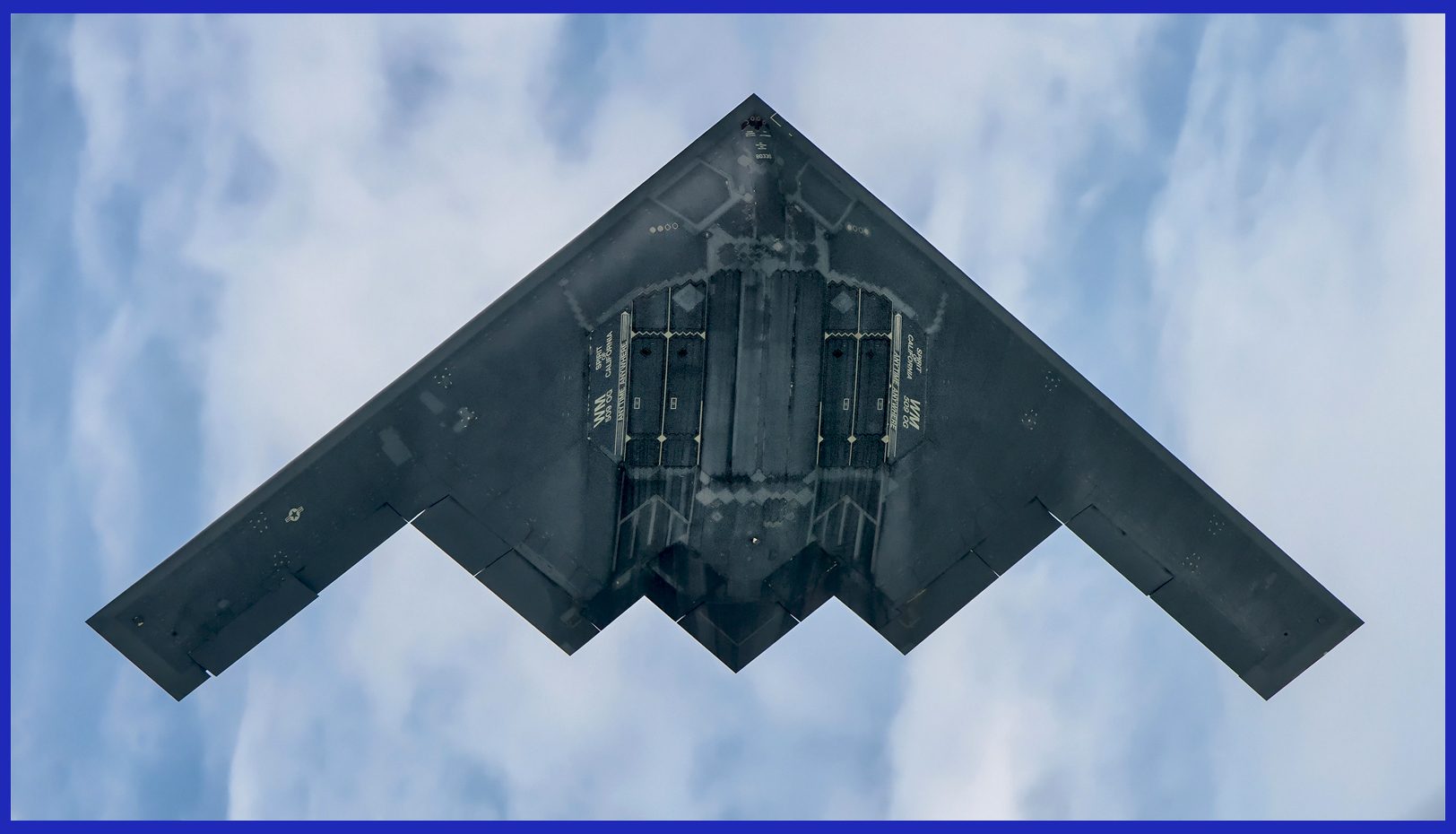
This capability for stealth arises from a fusion of decreased acoustic, infrared, and visual indications, alongside the minimized radar cross-section, all working together harmoniously to elude various detection systems that could potentially be employed to ascertain and target the aircraft. The stealth functionality of the B-2 contributes to a reduction in the necessity for accompanying aircraft to fulfil tasks like providing air cover, executing Suppression of Enemy Air Defenses (SEAD), and deploying electronic countermeasures. This effectively establishes the bomber as a potent “force multiplier.” As of the current juncture in 2023, there have been no documented instances of missiles being launched at a B-2 during any of its prior missions.
Curiously, the B-2 is coated with anti-reflective paint to purposefully diminish optical visibility during daylight operations. The undersides of the aircraft are shaded in dark hues due to its high-altitude flights at 50,000 ft. At such altitudes, the selection of a dark grey paint has been guided by research, as it seamlessly merges with the sky. Additionally, the B-2 finds protection within a specialized air-conditioned hangar, meticulously designed to preserve its stealth coating. Approximately every seven years, experts carefully remove this specialized coating using crystallized wheat starch. This meticulous process facilitates a thorough examination of the aircraft’s surfaces, aiming to identify any potential indications of dents or scratches.
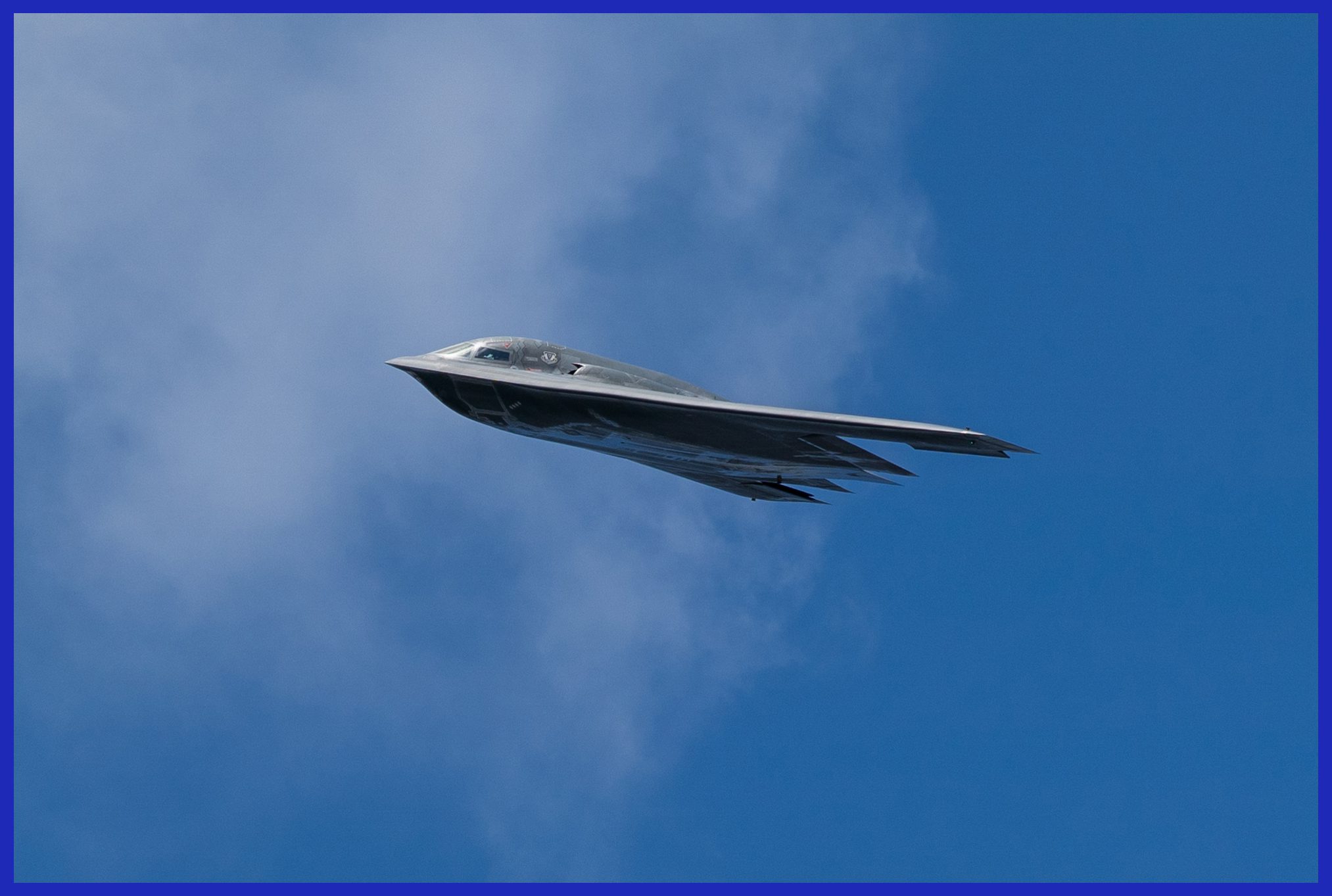
B-2 Spirit’s Radar Cross-Section (RCS)
The utilization of advanced composite materials and radar-absorbent coatings serves to effectively absorb and disperse radar energy, resulting in the reduction of radar waves that are reflected back to the radar receiver. The reduction of radar cross-section (RCS) due to the aircraft’s shape had been previously observed in aircraft such as the Royal Air Force’s Avro Vulcan strategic bomber and the USAF’s F-117 Nighthawk. To deflect radar beams, the B-2 incorporates numerous curved and rounded surfaces throughout its exposed airframe. Notably, sources suggest that the B-2 boasts a radar cross-section (RCS) measuring around 0.1 m² (1.1 sq ft).
Despite not consistently employing stealth capabilities, B-2 pilots engage the “stealth up” mode when approaching air defences, although the specifics of this manoeuvre remain classified. Furthermore, the B-2’s engines are strategically positioned deep within the fuselage, effectively minimizing the thermal visibility or infrared signature of the exhaust. This design feature significantly reduces susceptibility to infra-red search and track systems (IRST).
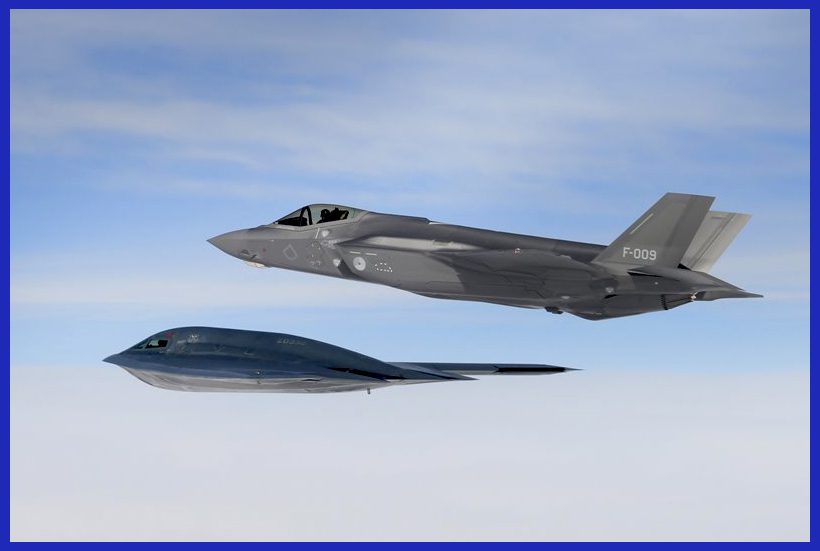
B-2’s Radar-Absorbent Materials: Enhancing Stealth Capabilities
The B-2 Spirit strategically integrates radar-absorbent materials, a cornerstone in bolstering its stealth capabilities. These cutting-edge composites and coatings play a pivotal role in absorbing and dispersing radar waves, leading to a remarkable reduction in the aircraft’s radar cross-section. A substantial portion of the B-2 is crafted from a carbon-graphite composite material renowned for its strength surpassing that of steel and its weight advantage over aluminium, while simultaneously exhibiting a notable capacity for absorbing radar energy.
The assembly of the B-2 is executed with exceptional precision in engineering tolerances to forestall any potential leaks, which could inadvertently augment its radar signature. Noteworthy innovations, including the integration of alternate high-frequency materials (AHFM) and automated material application techniques, have further been introduced to enhance the aircraft’s radar-absorbent characteristics and simultaneously curtail maintenance demands.
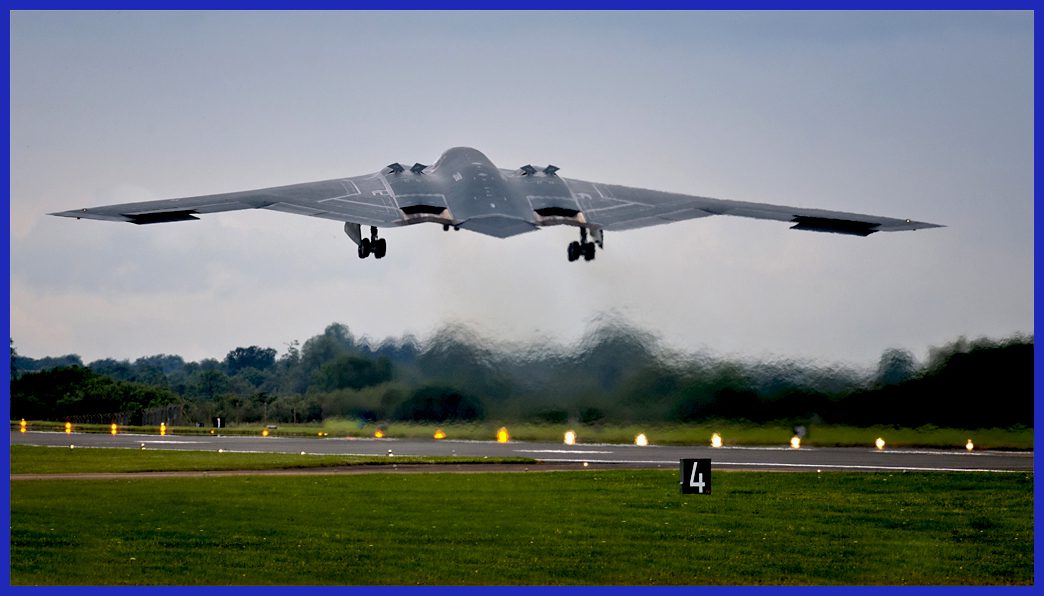
Extreme-Quality B2SS Hangars
B-2s are effectively supported by portable, environmentally-controlled hangars recognized as B-2 Shelter Systems (B2SS). These hangars are manufactured by American Spaceframe Fabricators Inc. and are priced at approximately US$5 million each. Furthermore, the aircraft’s specialized air-conditioned hangar is exclusively designed to preserve its stealth coating. Alongside their presence at USAF bases in Missouri, Florida, and California, the B2SS hangars have also been deployed at the Naval Support Facility in the Indian Ocean region of Diego Garcia, as well as the RAF Fairford station in Gloucestershire, United Kingdom.
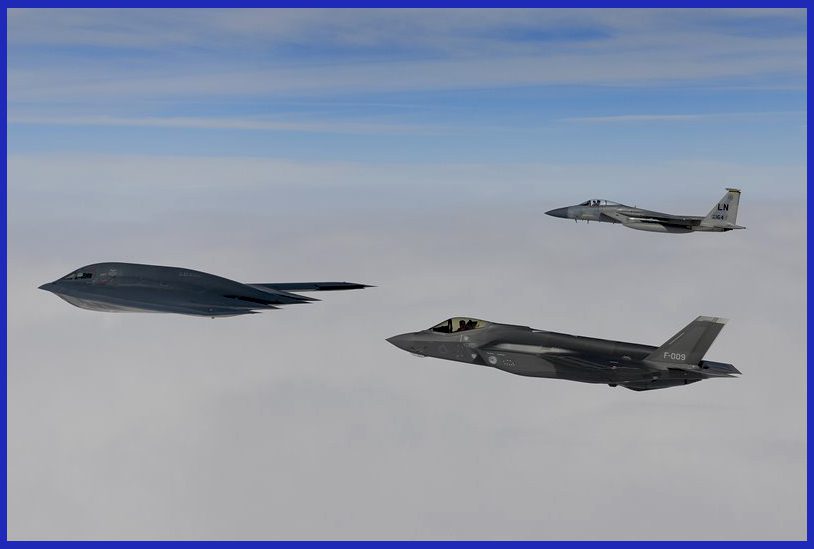
Tracing the Journey: The Major Operational History of the Northrop Grumman B-2 Spirit
The initial B-2 Spirit squadron was stationed at Whiteman Air Force Base in Missouri. This strategic deployment took place on December 17, 1993, and the aircraft was officially named “Spirit of Missouri” during its christening ceremony. Following a series of thorough assessments and trials, the B-2 achieved its initial operational capability (IOC) by January 1997. Notably, this aircraft possesses the versatile capability to deploy both conventional and nuclear ordnance, offering a comprehensive range of options for mission execution.
Kosovo War (1999): The B-2 Spirit marked its inaugural combat engagement during the Kosovo War, a testament to its exceptional precision strike capabilities that effectively engaged numerous targets while maintaining a minimal risk of detection. In a significant operational contribution, it played a pivotal role in the destruction of 33% of the preselected Serbian bombing targets within the initial eight weeks of U.S. participation in the conflict.
Noteworthy during this period, six B-2 aircraft executed uninterrupted journeys from their Missouri home base to Yugoslavia and back, given the absence of the B-2 Shelter Systems (B2SS) deployment beyond U.S. borders. Each individual sortie extended approximately 30 hours, encompassing in-flight refuelling and subsequent weapon loading upon their return to base. Cumulatively, the B-2 conducted a total of 50 sorties throughout the mission. Furthermore, the B-2 distinguished itself by becoming the pioneering aircraft to employ GPS satellite-guided JDAM “smart bombs” in combat scenarios during the Kosovo War. This usage significantly contributed to the precise and effective neutralization of various military installations on the ground.

Operation Enduring Freedom (2001): B-2s have been deployed in the War on Terror, undertaking extended missions against Taliban and Al-Qaeda targets in Afghanistan while providing support to U.S. and coalition forces. With the assistance of aerial refuelling support, the B-2 accomplished one of its lengthiest missions to date, spanning from Whiteman Air Force Base in Missouri to Afghanistan and back. However, the B-2’s utilization in combat preceded the USAF’s declaration of “full operational capability (FOC)” in December 2003. Throughout the operation, the B-2 was employed to engage leadership compounds and the infrastructure employed by the Taliban regime and al-Qaeda. Its capacity to carry a substantial payload of munitions enabled it to impact multiple targets within a single mission.
Operation Iraqi Freedom (2003): The Iraq War, also known as the 2003 invasion of Iraq, was aimed at deposing the regime of Saddam Hussein and eliminating suspected weapons of mass destruction (WMD) programs. The B-2 played a substantial role in the initial phases of the Iraq War, particularly during the “Shock and Awe” campaign, strategically devised to rapidly incapacitate Iraq’s military infrastructure and command-and-control centres. Despite having only a limited number of B-2s available at its home base situated in Whiteman AFB, what is intriguing is that, during the operation, it initiated its operations from Diego Garcia and various forward operating locations.
These locations had been designated as Andersen Air Force Base in Guam and RAF Fairford in the United Kingdom, where new climate-controlled hangars (B2SS) had been meticulously constructed. In total, the B-2s executed 27 sorties from their home base in Whiteman AFB and 22 sorties from the newly established forward operating location, releasing over 1,500,000 pounds (680,000 kg) of munitions, inclusive of 583 JDAM “smart bombs,” all during the year 2003.
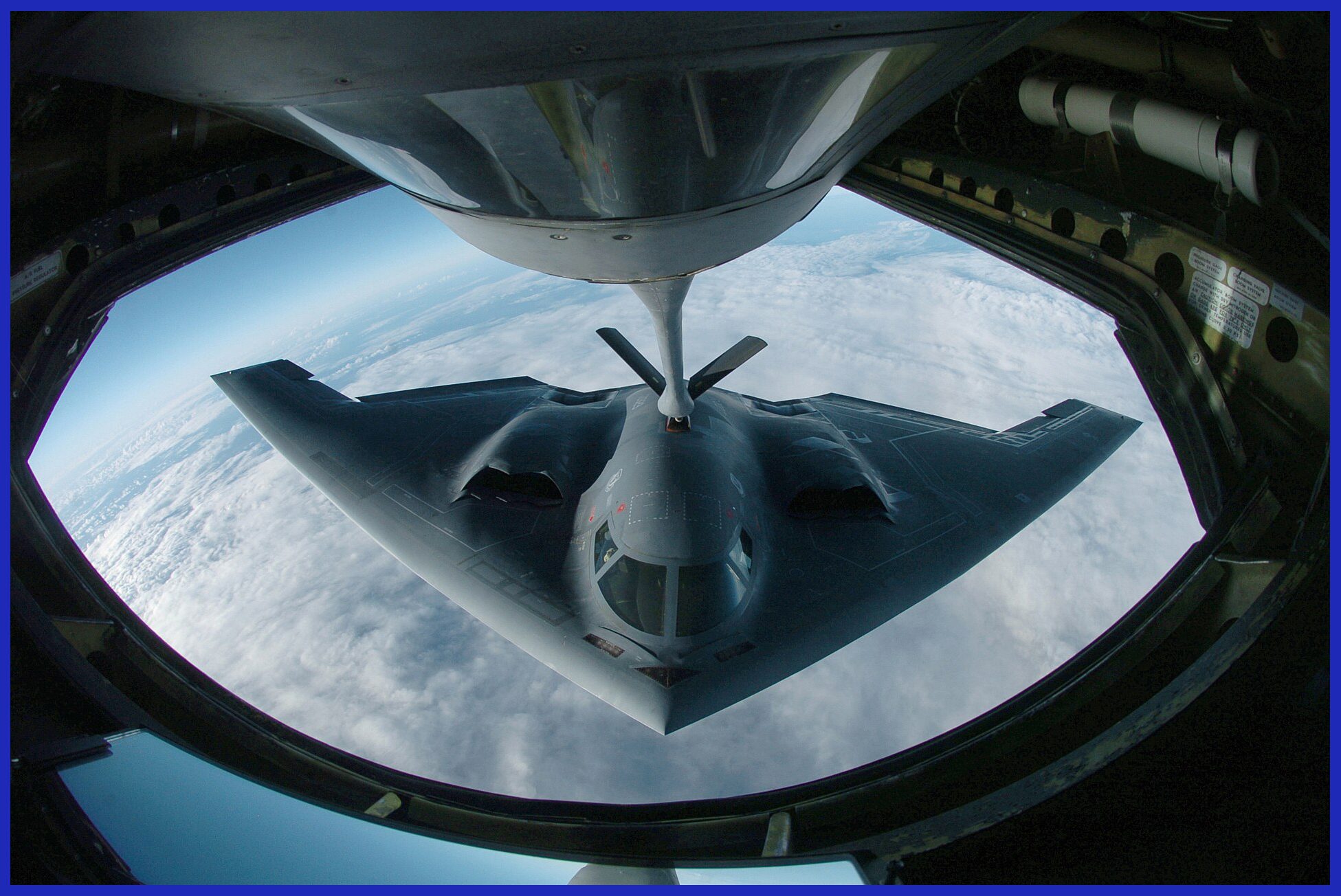
Global Strike Capability: The B-2’s exceptional long-range capability and precision strike abilities have firmly established it as a crucial asset for global deterrence and the projection of power, enabling rapid responses to emerging threats across the world. Addressing organizational concerns and notable errors within the USAF, all B-2s, along with the nuclear-capable B-52s and the USAF’s intercontinental ballistic missiles (ICBMs), were transitioned to the newly established Air Force Global Strike Command on February 1, 2010.
In March 2011, B-2s achieved a milestone by becoming the first U.S. aircraft to engage in Operation Odyssey Dawn, the UN-mandated enforcement of the Libyan no-fly zone. During this operation, three B-2s dispatched 40 bombs onto a Libyan airfield in support of the UN’s no-fly zone initiative. Notably, the B-2s undertook a direct flight from the U.S. mainland across the Atlantic Ocean to Libya, and during the operation, they were refuelled by allied tanker aircraft on four occasions during each round-trip mission.
In January 2017, two B-2s executed an attack on an ISIS training camp located 19 miles (30 km) southwest of Sirte, Libya, operating from their home base at Whiteman Air Force Base in Missouri. Collectively, they released a total of 108 JDAMs, each weighing 500 lbs (230 kg), in a coordinated effort.

Updated Technical Specifications of the Northrop Grumman B-2A Block 30 Spirit (2024)
- Country Of Origin: USA
- Crew: 2 ( pilot and mission commander )
- Length: 69 ft ( 21 m )
- Wingspan: 172 ft ( 52.42 m )
- Height: 17 ft ( 5.18 m )
- Wing area: 5,140 sq ft ( 478 m2 )
- Empty Weight: 71,700 kg ( 1,58,071 lb )
- Gross weight: 1,52,200 kg ( 3,35,544 lb )
- Max Takeoff Weight: 1,70,600 kg ( 3,76,109 lb )
- Fuel capacity: 75,750 kg ( 1,67,000 lb )
- Powerplant: 4 × General Electric F118-GE-100 non-afterburning turbofans, 17,300 lbf ( 77 kN ) thrust each
- Max Speed: 1,010 km/h ( 628 mph ) at 40,000 ft ( 12,192 m ) altitude / Mach 0.95 at sea level
- Cruise speed: 900 km/h ( 559 mph ) at 40,000 ft ( 12,192 m ) altitude
- Regular range: Intercontinental, 11,000 km ( 6,835 mi ) with weapon load of 18,000 kg ( 39,683 lb )
- Service ceiling: 50,000 ft ( 15,240 m )
- Armament: The aircraft features 2 internal bays for ordnance and payload, officially limited to 18,000 kg (39,683 lb); however, its maximum estimated capacity reaches 23,000 kg (50,706 lb). This enables the aircraft to carry an array of weapons, including:
- 80× 230 kg ( 507 lb ) class bombs ( Mk-82, GBU-38 ) mounted on the Bomb Rack Assembly ( BRA )
36× 340 kg ( 750 lb ) CBU class bombs on the BRA
16× 910 kg ( 2,006 lb ) class bombs ( Mk-84, GBU-31 ) mounted on the Rotary Launcher Assembly ( RLA )
16× B61 or B83 nuclear bombs on the RLA for strategic missions
Standoff weapons: AGM-154 Joint Standoff Weapon ( JSOW ) and AGM-158 Joint Air-to-Surface Standoff Missile ( JASSM ) or
2× GBU-57 Massive Ordnance Penetrator
Furthermore, seize this exclusive opportunity to acquire the exquisite large-scale 1/200 premium die-cast models of the formidable Northrop Grumman B-2A Spirit. These remarkable and iconic stealth military bombers boast an impeccable track record and are now available for purchase on AirModels with worldwide delivery. Click here now to secure your piece before the limited stock is depleted.

In conclusion, the Northrop Grumman B-2 Spirit stands as an unparalleled icon of modern military aviation. Its distinctive flying wing design, revolutionary stealth technology, and long-range precision strike capabilities have shaped the future of strategic warfare. The B-2’s role in conflicts like Operation Enduring Freedom and the Iraq War showcased its ability to deliver devastatingly accurate strikes while minimizing collateral damage.
As a symbol of deterrence and strategic flexibility, the B-2’s impact transcends the battlefield, influencing geopolitics through its mere presence. This remarkable aircraft has redefined the paradigm of global power projection, illustrating the harmonious fusion of cutting-edge engineering and strategic vision.
With the forthcoming advancement represented by the super advanced B-21 Raider, the B-2’s torch will be passed after it, yet it is projected to continue its service for more than a decade, at least until 2036. Hence, the B-2 Spirit remains an embodiment of technological brilliance, underscoring the perpetual evolution of aerial warfare and its enduring significance in an ever-changing world.
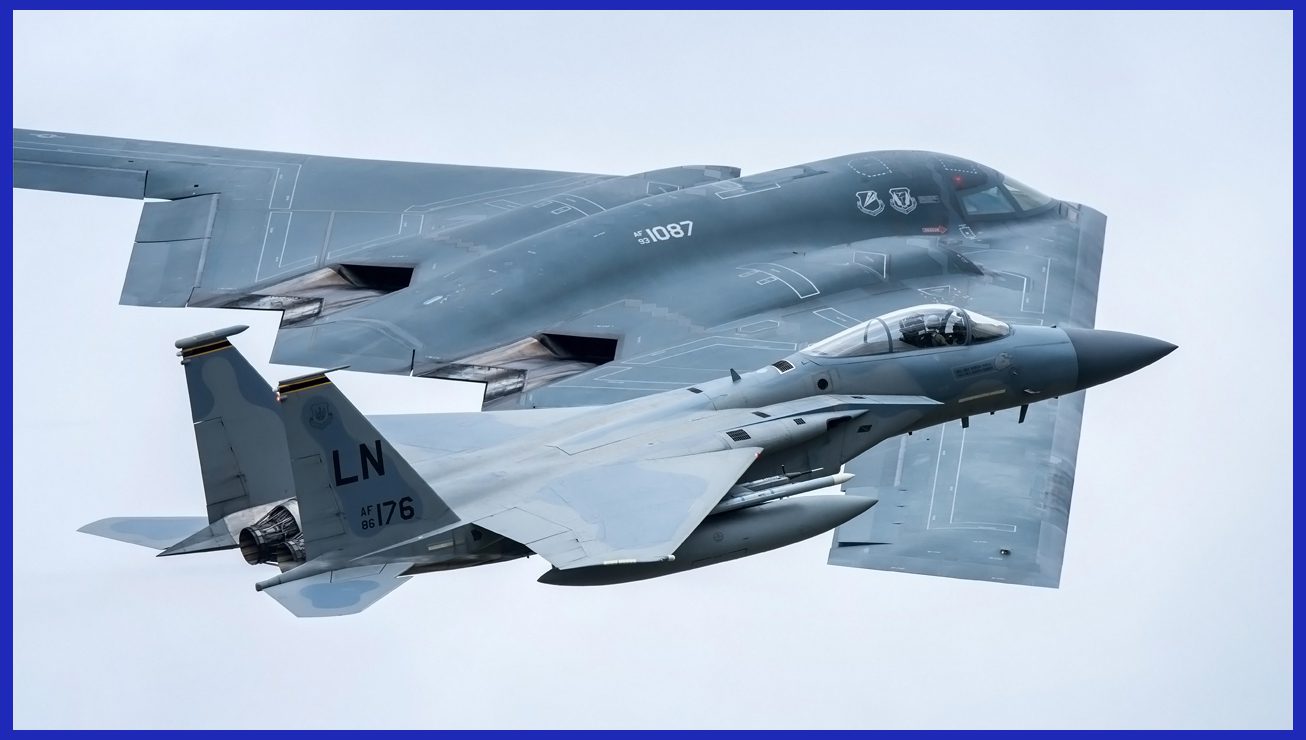
Important Announcement for Our Valued Readers!
After an article is published, it is possible that updates or changes may have occurred beyond the time of publication. Therefore, it is important to be aware that certain information in the article might be outdated. To ensure the most accurate analysis, it is highly recommended to verify the content with the latest sources available.
However, we are dedicated to delivering outstanding articles on military products and global updates. Maintaining quality and smooth operation requires resources. Your support sustains our efforts in providing insightful content. By purchasing high-quality products through our affiliated links, you help us keep our platform alive and acquire top-notch items. Your unwavering support is invaluable and inspires us to strive further.
We welcome your suggestions and requests for more information, as we value feedback from our readers. If there’s specific defence material or equipment not covered on our site, please share your request in the comments. We’ll strive to research and provide the required information. We sincerely thank you for your unwavering interest in our website, and we eagerly anticipate hearing from you! Enjoy your reading experience!
